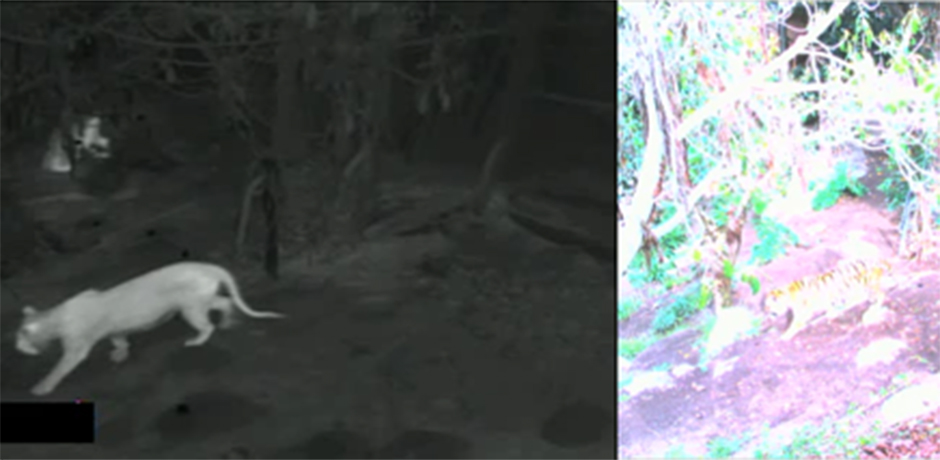News Release

Students in UCSD Engineers for Exploration program developed Sentinel, a ‘camera trap’ of the kind that reveals a tiger in the wild via high-resolution thermal imaging.
May 7, 2012
UC San Diego Students Demonstrate Smart Camera Trap at New Engineering Competition
Forget about building a better mouse trap. University of California, San Diego sophomore Riley Yeakle and his teammates have come up with a better camera trap, and they faced off with finalists from around the country when they unveiled working prototypes of their visions for embedded systems at a new, national engineering student competition. The new, improved camera trap introduces a cascade of low-power ‘geophone’ vibration sensors placed around the camera turret. The geophones convert ground movement into voltage, so if an animal comes close enough to trip a sensor (usually within a radius of three feet from the sensor), the turret automatically swings around to face in the direction of the tripped sensor. Simultaneously, an Intel Atom processor begins to run a computer-vision algorithm looking for ‘blobs’ of color (groups of similarly colored pixels). A large, tan-colored blob, for example, may indicate a lion. If so, the camera can lock on to the moving blob and begin tracking it. UC San Diego undergraduates from the Engineers for Exploration program demonstrated their Sentinel intelligent camera trap system at the first annual Cornell Cup USA competition, presented by Intel, May 4-5 at Walt Disney World in Florida. It is one of 22 collegiate teams selected as finalists to demonstrate their engineering projects in embedded system design and development. UC San Diego’s Sentinel and UC Berkeley’s Solar Drone UAV are the only University of California projects to make it to the finals. While falling short of the top three, the UC San Diego as well as UC Berkeley teams were awarded Honorable Mentions for their innovations.
